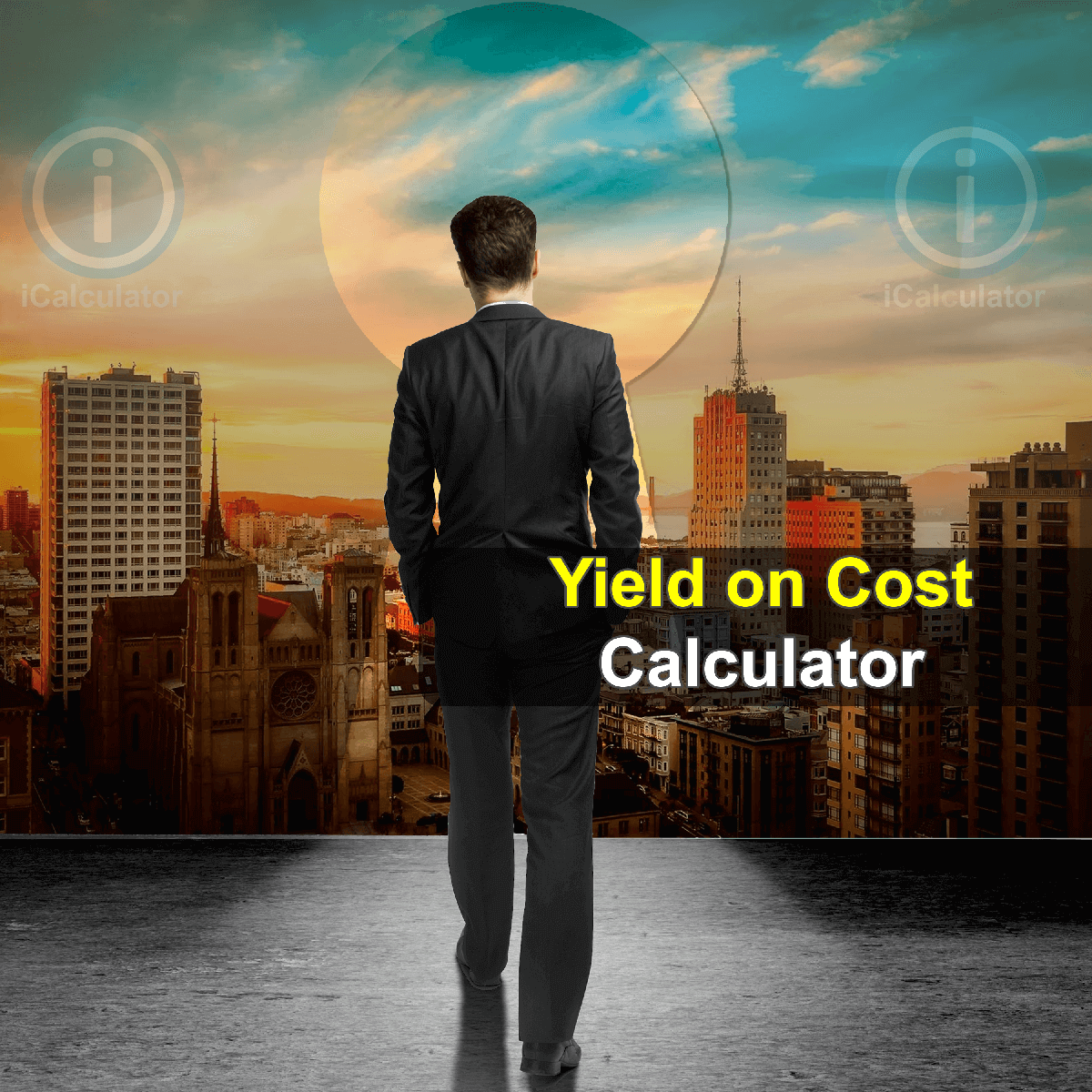Menu
Yield on Cost Calculator
Investments are made to gain returns. It could be a purchase of property or purchase of stock equity, when you invest your hard-earned money, you expect returns. Finding out the return on investment is essential for making future investment decisions. Yield on cost is one of the many methods that you can use to assess the profitability of your portfolio.
Please provide a rating, it takes seconds and helps us to keep this resource free for all to use
Calculate Yield on Cost for Visibility of Returns on Your Original Investments

Yield on cost is one of the simplest methods to calculate the dividend yield. It is quite popular and vastly used by individual investors as it is useful for getting a clear-cut picture of your returns on investment with respect to initial price you have paid to purchase the equity.
Let's look deeper into the meaning and the calculation method of yield on cost.
Definition and calculation method of Yield on cost
Yield on cost is a concept that shows you the value of your investment returns on the basis of initial cost of the shares. The individual investors who invest in dividend growth funds which belong to the companies that regularly increase dividend value, use yield on cost ratio to measure yearly returns on their investments.
The yield on investment becomes high on the stocks that have grown their dividend regularly over time. You can see a higher yield on cost, on these dividend growth funds when you have held your investments for a very long time.
You can calculate the yield on cost by dividing the dividend paid for each unit by the initial price paid per unit for the purchase of that stock. This can be better illustrated by an example, we will use Euros as an example currency: Let's say that you have purchased a stock at €20 per share and it provides an annual dividend of €1.5 per share, the yield on the cost percentage will be calculated as:
Another way of calculating the yield on cost is to use the online calculator. You will learn below how using calculator is more popular for performing the calculations such calculations.
How & Why to Use the Calculator for Your Investment Returns
The Yield on cost calculator designed by iCalculator provides you with accurate results with just a few clicks of the mouse. In order to obtain results the following entries are required:
- The purchase price per share: The amount per unit that was spent at the time of purchase of the particular stock.
- Current price: This is optional to enter, which means the current price of the stock per unit.
- Annual dividend: The amount of dividends you have received per unit for the stock in question.
On the basis of above the above inputs the calculator will provide you with the yield to the cost of your equity.
The calculator simplifies your calculations and the results obtained from the calculator can be used to evaluate the returns on your stock investments.
You will be able to keep a track of your dividend yield and you can use it to compare with yield on cost from other stocks. This will enable you to make wiser decisions for your equity portfolio.
Both manual calculations and a calculator can be used to obtain a percent value of the dividend yield. However, dividend yield stock is affected by the cost of investment and some other factors, let's take a brief look at them.
Factors That Affect Yield of Cost
Compounding of dividends affects the yield on cost the most. If the dividends paid by the stock are compounded and reinvested, that will cause more of the same shares to be added to your portfolio, thus reducing the yield on cost. This, in turn, makes the calculation of yield on cost metric more complex and confusing because of the constant change in the cost of investment.
Cost of investment needs to be recorded properly. You should keep a record of the initial price as well as the price that you have paid on the additional purchase of the same stock. These costs should be added to the cost when calculating the yield on cost. Ignoring the additional cost may result in inflated yield on cost.
Term of investment has a significant impact on yield on cost. A longer term of investment results in a bigger yield on cost. In long term dividend returns keep growing due to inflation, whereas the capital cost remains the same. Put simply, the higher the term of investment higher the yield on cost.
Other than these factors, another factor that should be considered because it is important to not be confused with the yield on cost is current dividend yield.
Finance Calculators
You may also find the following Finance calculators useful.
- Average Payables Period Calculator
- Periodic Compound Interest Calculator
- Annual Interest Rate Calculator
- Perpetuity Calculator
- Loan Calculator
- Compound Interest Calculator
- Employee Revenue Calculator
- Price Elasticity Of Demand Calculator
- Absa Loan Calculator
- Combined Dividend And Paye Calculator 2018
- Weighted Average Cost Of Capital Calculator
- Accrued Interest Calculator
- Early Repayment Loan Calculator
- Balloon Mortgage Calculator
- Annuity Calculator
- Property Value Calculator
- Roi Calculator
- Annual Amortization Calculator
- Simple Interest Plus Capital Calculator
- Modified Internal Rate Of Return Calculator